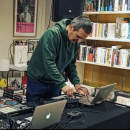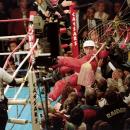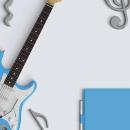Garritan Stradivari Solo Violin
[ Imagen no disponible ]

Expressive performances of sampled string instruments aren’t anything new. You’ve probably heard convincing tracks in movie soundtracks, perhaps seen amazing controller-laden live performances, and in all likelihood created some mind-blowing string parts yourself. All it takes is an array of programmable controllers, a mastery of program change commands or MIDI track switching, some kick-ass samples, and some serious musicianship.
With these two virtual string instruments, Garritan is out to pare that list of requirements down to one: musicianship. And thanks to some groovy behind-the-scenes software technology, they’re upping the ante where realism is concerned. Judging from the way previous technological advances have been implemented in the virtual orchestra world at large, you’d expect this added realism to come at a cost, whether in hard disk size, CPU requirements, or just cold, hard cash. Both of these libraries pleasantly dash all three expectations. Though each library is sampled, not physically modeled, their installation footprints are remarkably small. Their CPU needs are modern, but not high-octane. And at under $200 retail each, they’re almost impulse buys.
So how about that realism? Let’s rosin up our virtual bows and see.
Overview
The idea behind the Stradivari Solo Violin and the Gofriller Solo Cello is to give you two fantastic-sounding virtual instruments that are bonehead simple to install and use — and this is in fact what Garritan has achieved. Since neither of the libraries requires more than 1GB of hard disk space, installation is rapid by modern standards. Since these are Kontakt Player 2 instruments, activation is handled through the Native Instruments online authorization system, which on the whole does a pretty good job of keeping track of all the NI software you’ve installed and keeping you informed of what updates are available. The only frustration I experienced during the installation or authorization process was with the NI Service Center software itself, which had to download its own update several times before it would authorize the Garritan software. It didn’t help that I had misplaced my login information for the NI site; hopefully you’re better at record-keeping than I am.
The instruments are self-contained Kontakt Player 2 libraries, which you can play via the included standalone Kontakt Player or as plug-in instruments in your host sequencer. Either way, the interface is as you see it above; no secrets, no hidden menus, almost nothing to configure. What the instruments are expecting is that you’ll perform upon them from a five-octave MIDI keyboard with mod wheel and aftertouch, to which you’ve connected sustain and expression pedals. This gives you plenty of keyboard real estate with which to play the entire range of the instruments, plus access a lower octave of keys that are programmed to switch bow articulations and to change from regular tone to con sordino muted tone, sull’altra corda tones (played higher on the fingerboard but on a lower string), pizzicato, harmonics, trills (you play them, they’re not sampled), and polyphonic modes. You control vibrato depth with the mod wheel and vibrato rate with aftertouch; specify offsets and minimum and maximum rates in the minimal controls in the software interface. Your expression pedal handles volume, and with the sustain pedal depressed, the instrument enters yet another mode: bow direction changes for sustained notes.
just the facts
Solo violin and solo
PROS:
Beautiful sound. Incredible realism when performed in real time or when sequenced. User interface facilitates musical expression.
CONS:
Tremolo not as convincing as the other articulations. Harmonics only of open strings.
VERSION REVIEWED
Stradivari Violin, 2.0; Gofriller Cello, 3.02.
FORMATS
VST, DX, AU, RTAS, standalone; includes versions for Finale and Sibelius.
SYSTEM REQUIREMENTS
1GB drive space, 1GB RAM minimum, 2GB RAM recommended. Mac OS 10.4.x or greater, G4 1.5GHz minimum, G5 or Intel CPU recommended (Mac); Windows XP; 2.4GHz Pentium 4/Athlon CPU or faster recommended (PC).
COPY PROTECTION
Online authorization.
GORY DETAILS
ARTICULATIONS
Legato (upbow, downbow): martelè, staccato, marcato, tremolo, pizzicato.
TONES
Open, con sordino, sull’altra corda, harmonics.
PROGRAMMABLE PARAMETERS
Violin: vibrato rate offset, vibrato inhibition during pitch bend. Cello: vibrato rate offset, vibrato inhibition during pitch bend, vibrato rate randomize, bow noise.
IMPULSE RESPONSES
Violin: 2 IRs. Cello: 4 IRs.
CLAIM CHECK
According to Gary Garritan, “The design goal of the Stradivari Solo violin and the Gofriller Solo Cello, as well as all our products, is to provide truly real-time playable instruments that are smarter, feel better, provide new levels of realism, and are fun to perform. This seems a better way than the old paradigm of sorting through a labyrinth of sampled articulations and piecing them together like a jigsaw puzzle. Everyone loves tools that make it easy to make music! These performance-based instruments use cutting-edge technology and chart new territory. The solo violin and cello instruments are a continuation of the trend that started with Personal Orchestra to provide simple real-time instruments. However, these new solo instruments are designed for the more advanced musician who has a good understanding of string techniques. It helps to understand the instruments you are trying to emulate.”
SUBIENDO LAS OTRAS PARTES SOLO SON 5
[ Imagen no disponible ]

Expressive performances of sampled string instruments aren’t anything new. You’ve probably heard convincing tracks in movie soundtracks, perhaps seen amazing controller-laden live performances, and in all likelihood created some mind-blowing string parts yourself. All it takes is an array of programmable controllers, a mastery of program change commands or MIDI track switching, some kick-ass samples, and some serious musicianship.
With these two virtual string instruments, Garritan is out to pare that list of requirements down to one: musicianship. And thanks to some groovy behind-the-scenes software technology, they’re upping the ante where realism is concerned. Judging from the way previous technological advances have been implemented in the virtual orchestra world at large, you’d expect this added realism to come at a cost, whether in hard disk size, CPU requirements, or just cold, hard cash. Both of these libraries pleasantly dash all three expectations. Though each library is sampled, not physically modeled, their installation footprints are remarkably small. Their CPU needs are modern, but not high-octane. And at under $200 retail each, they’re almost impulse buys.
So how about that realism? Let’s rosin up our virtual bows and see.
Overview
The idea behind the Stradivari Solo Violin and the Gofriller Solo Cello is to give you two fantastic-sounding virtual instruments that are bonehead simple to install and use — and this is in fact what Garritan has achieved. Since neither of the libraries requires more than 1GB of hard disk space, installation is rapid by modern standards. Since these are Kontakt Player 2 instruments, activation is handled through the Native Instruments online authorization system, which on the whole does a pretty good job of keeping track of all the NI software you’ve installed and keeping you informed of what updates are available. The only frustration I experienced during the installation or authorization process was with the NI Service Center software itself, which had to download its own update several times before it would authorize the Garritan software. It didn’t help that I had misplaced my login information for the NI site; hopefully you’re better at record-keeping than I am.
The instruments are self-contained Kontakt Player 2 libraries, which you can play via the included standalone Kontakt Player or as plug-in instruments in your host sequencer. Either way, the interface is as you see it above; no secrets, no hidden menus, almost nothing to configure. What the instruments are expecting is that you’ll perform upon them from a five-octave MIDI keyboard with mod wheel and aftertouch, to which you’ve connected sustain and expression pedals. This gives you plenty of keyboard real estate with which to play the entire range of the instruments, plus access a lower octave of keys that are programmed to switch bow articulations and to change from regular tone to con sordino muted tone, sull’altra corda tones (played higher on the fingerboard but on a lower string), pizzicato, harmonics, trills (you play them, they’re not sampled), and polyphonic modes. You control vibrato depth with the mod wheel and vibrato rate with aftertouch; specify offsets and minimum and maximum rates in the minimal controls in the software interface. Your expression pedal handles volume, and with the sustain pedal depressed, the instrument enters yet another mode: bow direction changes for sustained notes.
just the facts
Solo violin and solo
PROS:
Beautiful sound. Incredible realism when performed in real time or when sequenced. User interface facilitates musical expression.
CONS:
Tremolo not as convincing as the other articulations. Harmonics only of open strings.
VERSION REVIEWED
Stradivari Violin, 2.0; Gofriller Cello, 3.02.
FORMATS
VST, DX, AU, RTAS, standalone; includes versions for Finale and Sibelius.
SYSTEM REQUIREMENTS
1GB drive space, 1GB RAM minimum, 2GB RAM recommended. Mac OS 10.4.x or greater, G4 1.5GHz minimum, G5 or Intel CPU recommended (Mac); Windows XP; 2.4GHz Pentium 4/Athlon CPU or faster recommended (PC).
COPY PROTECTION
Online authorization.
GORY DETAILS
ARTICULATIONS
Legato (upbow, downbow): martelè, staccato, marcato, tremolo, pizzicato.
TONES
Open, con sordino, sull’altra corda, harmonics.
PROGRAMMABLE PARAMETERS
Violin: vibrato rate offset, vibrato inhibition during pitch bend. Cello: vibrato rate offset, vibrato inhibition during pitch bend, vibrato rate randomize, bow noise.
IMPULSE RESPONSES
Violin: 2 IRs. Cello: 4 IRs.
CLAIM CHECK
According to Gary Garritan, “The design goal of the Stradivari Solo violin and the Gofriller Solo Cello, as well as all our products, is to provide truly real-time playable instruments that are smarter, feel better, provide new levels of realism, and are fun to perform. This seems a better way than the old paradigm of sorting through a labyrinth of sampled articulations and piecing them together like a jigsaw puzzle. Everyone loves tools that make it easy to make music! These performance-based instruments use cutting-edge technology and chart new territory. The solo violin and cello instruments are a continuation of the trend that started with Personal Orchestra to provide simple real-time instruments. However, these new solo instruments are designed for the more advanced musician who has a good understanding of string techniques. It helps to understand the instruments you are trying to emulate.”
SUBIENDO LAS OTRAS PARTES SOLO SON 5








